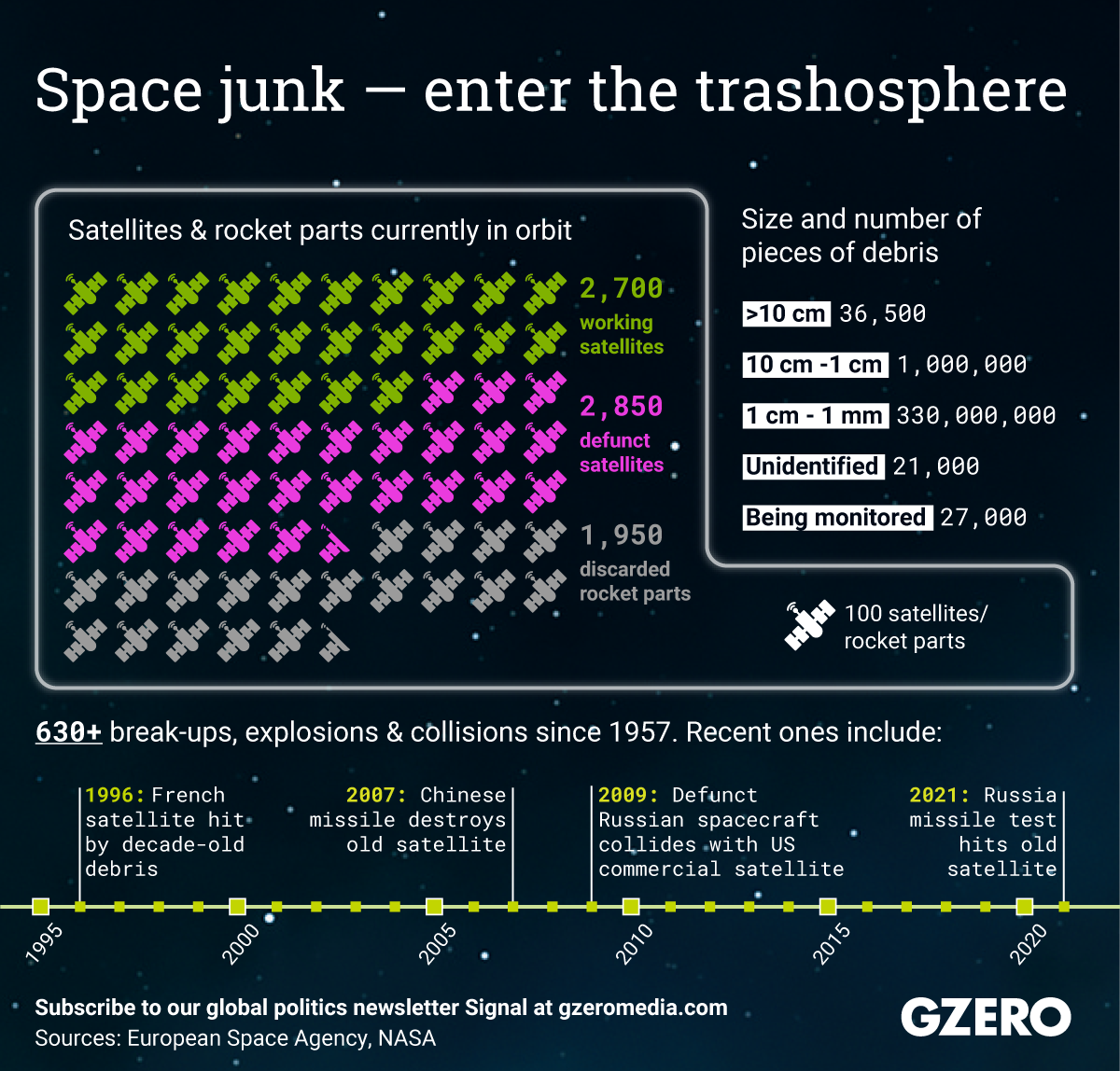The Graphic Truth: Space junk — enter the trashosphere
November 16, 2021
Gabriella Turrisi
A Russian missile shot down on Monday a Soviet-era defunct satellite, breaking it up into thousands of fragments and throwing NASA into a tizzy. As the number of satellites in space has grown rapidly in recent years, the amount of trash floating up there too now vastly exceeds the tonnage of the satellites themselves from accidents, collisions, explosions, and the odd missile hit. It's not just a litter problem — space junk moves at over 17 thousand miles per hour, as fast as functioning spacecraft, so even a tiny fragment can severely damage a satellite. We compare the number of satellites to the debris circling Earth.
From Your Site Articles
- War in space? Time to update space law - GZERO Media ›
- Mission to the Moon, with Artemis II astronaut Jeremy Hansen - GZERO Media ›
- The satellite revolution in Low Earth Orbit - GZERO Media ›
- The future of space: congested and contested - GZERO Media ›
- Can the US stay ahead of Russia & China in the space race? - GZERO Media ›
- Mark Kelly on the new space race - GZERO Media ›
